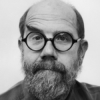Chuck Close

Chuck Close
Charles Thomas "Chuck" Closeis an American painter/artist and photographer who achieved fame as a photorealist, through his massive-scale portraits. Close often paints abstract portraits, that are shown in the world's finest galleries. Although a catastrophic spinal artery collapse in 1988 left him severely paralyzed, he has continued to paint and produce work that remains sought after by museums and collectors. Close lives and works in Bridgehampton, New York and Long Beach, NY and New York City's East Village. His first...
NationalityAmerican
ProfessionPhotographer
Date of Birth5 July 1940
CityMonroe, WA
CountryUnited States of America
There are so many artists that are dyslexic or learning disabled, it's just phenomenal. There's also an unbelievably high proportion of artists who are left-handed, and a high correlation between left-handedness and learning disabilities.
What difference does it make whether you're looking at a photograph or looking at a still life in front of you? You still have to look.
Most people are good at too many things. And when you say someone is focused, more often than not what you actually mean is they're very narrow.
I'm poor white trash from the state of Washington.
In the 7th grade, I made a 20-foot long mural of the Lewis and Clark Trail while we were studying that in history because I knew I wasn't going to be able to spit back the names and the dates and all that stuff on a test.
I'm very interested in how we read things, especially the link between seeing two-dimensional and three-dimensional images, because of how I read.
In my art, I deconstruct and then I reconstruct, so visual perception is one of my primary interests.
It's always a pleasure to talk about someone else's work.
Losing my father at a tender age was extremely important in being able to accept what happened to me later when I became a quadriplegic.
Having a routine, knowing what to do, gives me a sense of freedom and keeps me from going crazy. It's calming.
The camera is objective. When it records a face it can't make any hierarchical decisions about a nose being more important than a cheek. The camera is not aware of what it is looking at. It just gets it all down.
It always amazes me that just when I think there's nothing left to do in photography and that all permutations and possibilities have been exhausted, someone comes along and puts the medium to new use, and makes it his or her own, yanks it out of this kind of amateur status, and makes it as profound and as moving and as formally interesting as any other medium.
I did some pastels and I did other pieces in which there was just basically one color per square, and then they would get bigger and I could get 2 or 3 colors into the square, and ultimately I just started making oil paintings.
I only use three primaries, so the nice thing is I can't have favorite colors.